Framing and Evaluating the Best Practices of IFC-Based Automated Rule Checking: A Case Study
Abstract
:1. Introduction
2. Literature Review
2.1. Automated Rule Checking
2.2. Traditional Application of ARC: Validation
2.3. Challenges of ARC
3. Methodology
- -
- Clarify expectations (e.g., what can/should the ARC be used for).
- -
- Define the requirements (e.g., how much change in users’ practices can be expected).
- -
- Establish the baseline: understanding the current framework of checking a rule, the roles and responsibilities of designers and code experts, best practices, and common mistakes in checking a rule.
- -
- Rules that are used repeatedly in a project.
- -
- Rules that are checked by different users/designers throughout the project (requires different experts to communicate and exchange results and, therefore, is susceptible to error).
- -
- Rules that require extensive calculations (and are, therefore, error-prone).
- -
- Rules that incur high costs and delays if implemented incorrectly.
- -
- Rules that have complex structures (such as having other rules embedded within them).
- -
- Evaluate whether the tool correctly checks the rules (algorithm test).
- -
- Assess the performance and usability of the tool (e.g., run time and user input).
- -
- Evaluate the user interface and the generated report (e.g., easy to use features and adequate information in the report).
4. Case Study
4.1. Rule Selection and Analysis
4.2. Requirement Analysis and Initial Algorithm
- -
- The rules should be checked for women’s and men’s washrooms separately. The results will determine other types of washrooms (e.g., universal).
- -
- Minimal interference with the designer’s usual practices.
- -
- A simple IFC export procedure (using predefined MVDs).
- -
- A minimum IFC file size.
- -
- Software independency.
- -
- The checking process should be able to decompose a floor into separate usage spaces so that it can account for different usages in one floor.
- -
- For the system to be proactive, it should be able to identify the required number of water closets in advance before the design is initiated (i.e., the initial stage of the design).
- -
- Most of the numbers are subject to change in the future. The numbers and tables should not be hardcoded, and users should be able to adjust them.
- -
- The level of automation: Area and occupancy load calculation should be automated. Users can manually input building specific features (such as intended use).
4.3. Evolutionary Development Approach
5. Discussion
5.1. Limitations
5.2. Implications
5.3. Perspectives of ARC in the Future
6. Conclusions
Author Contributions
Funding
Data Availability Statement
Conflicts of Interest
References
- Fenves, S.J. Tabular Decision Logic for Structural Design. J. Struct. Div. 1966, 92, 473–490. [Google Scholar] [CrossRef]
- Eastman, C.; Lee, J.M.; Jeong, Y.S.; Lee, J.K. Automatic rule-based checking of building designs. Autom. Constr. 2009, 18, 1011–1033. [Google Scholar] [CrossRef]
- Solihin, W.; Eastman, C. Classification of rules for automated BIM rule checking development. Autom. Constr. 2015, 53, 69–82. [Google Scholar] [CrossRef]
- Salama, D.M.; El-Gohary, N.M. Semantic text classification for supporting automated compliance checking in con-struction. J. Comput. Civ. Eng. 2013, 30, 04014106. [Google Scholar] [CrossRef]
- Pauwels, P.; Van Deursen, D.; Verstraeten, R.; De Roo, J.; De Meyer, R.; Van de Walle, R.; Van Campenhout, J. A semantic rule checking environment for building performance checking. Autom. Constr. 2011, 20, 506–518. [Google Scholar] [CrossRef]
- Lin, J.-R.; Zhou, Y.-C. Semantic classification and hash code accelerated detection of design changes in BIM models. Autom. Constr. 2020, 115, 103212. [Google Scholar] [CrossRef]
- Hjelseth, E.; Lassen, A.K.; Dimyadi, J. Development of BIM-based model checking solutions. In Proceedings of the 33rd International Conference of CIB W78, Brisbane, Australia, 31 October–2 November 2016. [Google Scholar]
- Hamidavi, T.; Abrishami, S.; Ponterosso, P.; Begg, D.; Nanos, N. OSD: A framework for the early stage parametric optimisation of the structural design in BIM-based platform. Constr. Innov. 2020, 20. [Google Scholar] [CrossRef]
- Mekawy, M.; Petzold, F. BIM-based model checking in the early design phases of precast concrete structures: Learning, Prototyping and Adapting. In Proceedings of the 23rd International Conference on Computer-Aided Architectural Design Research in Asia, Beijing, China, 17–19 May 2018; pp. 71–80. [Google Scholar]
- Beach, T.H.; Hippolyte, J.-L.; Rezgui, Y. Towards the adoption of automated regulatory compliance checking in the built environment. Autom. Constr. 2020, 118. [Google Scholar] [CrossRef]
- Clayton, M.; Fudge, P.; Thompson, J. Automated plan review for building code compliance using BIM. In Proceedings of the 20th International Workshop: Intelligent Computing in Engineering (EG-ICE 2013), Vienna, Austria, 1–3 July 2013. [Google Scholar]
- Garrett, J.H.; Fenves, S.J. A knowledge-based standards processor for structural component design. Eng. Comput. 1987, 2, 219–238. [Google Scholar] [CrossRef]
- Delis, E.A.; Delis, A. Automatic Fire-Code Checking Using Expert-System Technology. J. Comput. Civ. Eng. 1995, 9, 141–156. [Google Scholar] [CrossRef]
- Rosenman, M.A.; Gero, J.S. Design codes as expert systems. Comput. Des. 1985, 17, 399–409. [Google Scholar] [CrossRef]
- Dym, C.; Henchey, R.; Delis, E.; Gonick, S. A knowledge-based system for automated architectural code checking. Comput. Des. 1988, 20, 137–145. [Google Scholar] [CrossRef]
- Garrett, J.H.; Hakim, M.M. Object-oriented model of engineering design standards. J. Comput. Civ. Eng. 1992, 6, 323–347. [Google Scholar] [CrossRef]
- Yabuki, N.; Law, K.H. An Object-Logic model for the representation and processing of design standards. Eng. Comput. 1993, 9, 133–159. [Google Scholar] [CrossRef]
- Kerrigan, S.; Law, K.H. Logic-based regulation compliance-assistance. In Proceedings of the 9th International Conference on Artificial Intelligence and Law, Edinburgh, UK, 24–28 June 2003; pp. 126–135. [Google Scholar]
- Pinheiro, S.; Wimmer, R.; O’Donnell, J.; Muhic, S.; Bazjanac, V.; Maile, T.; Frisch, J.; van Treeck, C. MVD based information exchange between BIM and building energy performance simulation. Autom. Constr. 2018, 90, 91–103. [Google Scholar] [CrossRef] [Green Version]
- Preidel, C.; Borrmann, A. Automated code compliance checking based on a visual language and building information modeling. In Proceedings of the 32nd International Symposium on Automation and Robotics in Construction (ISARC), Oulu, Finland, 15–18 June 2015; IAARC Publications: Oulu, Finland, 2015. [Google Scholar]
- Motamedi, A.; Hammad, A.; Asen, Y. Knowledge-assisted BIM-based visual analytics for failure root cause detection in facilities management. Autom. Constr. 2014, 43, 73–83. [Google Scholar] [CrossRef]
- Motawa, I.; Almarshad, A. A knowledge-based BIM system for building maintenance. Autom. Constr. 2013, 29, 173–182. [Google Scholar] [CrossRef]
- Luo, H.; Gong, P. A BIM-based Code Compliance Checking Process of Deep Foundation Construction Plans. J. Intell. Robot. Syst. 2014, 79, 549–576. [Google Scholar] [CrossRef]
- Martins, J.P.; Monteiro, A. LicA: A BIM based automated code-checking application for water distribution systems. Autom. Constr. 2013, 29, 12–23. [Google Scholar] [CrossRef]
- Patlakas, P.; Livingstone, A.; Hairstans, R.; Neighbour, G. Automatic code compliance with multi-dimensional data fitting in a BIM context. Adv. Eng. Inform. 2018, 38, 216–231. [Google Scholar] [CrossRef] [Green Version]
- Sulankivi, K.; Zhang, S.; Teizer, J.; Eastman, C.M.; Kiviniemi, M.; Romo, I.; Granholm, L. Utilization of BIM-based automated safety checking in construction planning. In Proceedings of the 19th International CIB World Building Congress, Brisbane, Australia, 5–9 May 2013; pp. 5–9. [Google Scholar]
- Cooke, T.; Lingard, H.; Blismas, N.; Stranieri, A. ToolSHeDTM: The development and evaluation of a decision support tool for health and safety in construction design. Eng. Constr. Archit. Manag. 2008, 15, 336–351. [Google Scholar] [CrossRef]
- Choi, J.; Choi, J.; Kim, I. Development of BIM-based evacuation regulation checking system for high-rise and complex buildings. Autom. Constr. 2014, 46, 38–49. [Google Scholar] [CrossRef]
- Cheng, J.C.; Das, M. A BIM-based web service framework for green building energy simulation and code checking. J. Inf. Technol. Constr. 2014, 19, 150–168. [Google Scholar]
- Yurchyshyna, A.; Zarli, A. An ontology-based approach for formalisation and semantic organisation of conformance requirements in construction. Autom. Constr. 2009, 18, 1084–1098. [Google Scholar] [CrossRef]
- Beach, T.H.; Rezgui, Y.; Li, H.; Kasim, T. A rule-based semantic approach for automated regulatory compliance in the construction sector. Expert Syst. Appl. 2015, 42, 5219–5231. [Google Scholar] [CrossRef] [Green Version]
- Beetz, J.; Van Leeuwen, J.; De Vries, B. IfcOWL: A case of transforming EXPRESS schemas into ontologies. Ai Edam 2009, 23, 89. [Google Scholar] [CrossRef]
- Zhang, J.; El-Gohary, N.M. Automated information transformation for automated regulatory compliance checking in construction. J. Comput. Civ. Eng. 2015, 29, B4015001. [Google Scholar] [CrossRef] [Green Version]
- Zhang, J.; El-Gohary, N.M. Semantic NLP-Based Information Extraction from Construction Regulatory Documents for Automated Compliance Checking. J. Comput. Civ. Eng. 2016, 30, 04015014. [Google Scholar] [CrossRef] [Green Version]
- Zhang, J.; El-Gohary, N.M. Integrating semantic NLP and logic reasoning into a unified system for fully-automated code checking. Autom. Constr. 2017, 73, 45–57. [Google Scholar] [CrossRef] [Green Version]
- Dimyadi, J.; Amor, R. Automated building code compliance checking—Where is it at? In Proceedings of the 2013 World Building Congress (CIB WBC), Brisbane, Australia, 5–9 May 2013. [Google Scholar]
- Lin, T.A. Building Smart–A Strategy for Implementing BIM Solution in Singapore. Synth. J. 2006, 5, 117–124. [Google Scholar]
- Khemlani, L. CORENET e-PlanCheck: Singapore’s Automated Code Checking System, AECbytes (Building the Future). 2006. Available online: https://www.aecbytes.com/feature/2005/CORENETePlanCheck.html (accessed on 29 September 2021).
- novaCITYNETS Pte. Ltd. Available online: http://www.novacitynets.com/company_aboutus.htm (accessed on 30 October 2020).
- Drogemuller, R.; Woodbury, R.; Crawford, J. Extracting representation from structured text: Initial steps. In Proceedings of the 36th CIB W78 Conference on Information and Communication Technologies, Reykjavik, Iceland, 28–30 June 2000; pp. 302–307. [Google Scholar]
- Ding, L.; Drogemuller, R.; Rosenman, M.; Marchant, D.; Gero, J. Automating Code Checking for Building Designs-DesignCheck; University of Wollongong: Wollongong, Australia, 2006. [Google Scholar]
- Lee, J.M. Automated Checking of Building Requirements on Circulation Over a Range of Design Phases. Ph.D. Thesis, Georgia Institute of Technology: Atlanta, GA, USA, 2010. [Google Scholar]
- Han, C.S.; Kunz, J.C.; Law, K.H. Compliance analysis for disabled access. In Advances in Digital Government; Springer: New York, NY, USA, 2002; pp. 149–162. [Google Scholar]
- Eberg, E.; Heieraas, T.; Olsen, J.; Eidissen, S.H.; Eriksen, S.; Kristensen, K.H.; Christoffersen, O.; Lê, M.A.T.; Mohus, F. Experiences in Development and Use of a Digital Building Information Model (BIM) According to IFC Standards from the Building Project of Tromsø University College (HITOS) after Completed Full Conceptual Design Phase; Statsbygg: Oslo, Norway, 2006. [Google Scholar]
- Solihin, W.; Eastman, C.; Lee, Y.-C.; Yang, D.-H. A simplified relational database schema for transformation of BIM data into a query-efficient and spatially enabled database. Autom. Constr. 2017, 84, 367–383. [Google Scholar] [CrossRef]
- Dimyadi, J.; Pauwels, P.; Amor, R. Modelling and accessing regulatory knowledge for computer-assisted compliance audit. J. Inf. Technol. Constr. 2016, 21, 317–336. [Google Scholar]
- Nawari, N.O. A Generalized Adaptive Framework (GAF) for Automating Code Compliance Checking. Buildings 2019, 9, 86. [Google Scholar] [CrossRef] [Green Version]
- buildingSMART, Framing the Business Case for Automated Rule Checking. Available online: https://www.buildingsmart.org/wp-content/uploads/2020/06/buildingSMART-RR-TR1012-Framing-the-Business-Case-for-Automated-Rule-Checking-v1.1-Final-Dec-2019.pdf (accessed on 30 October 2020).
- Krystallis, I.; Vernikos, V.; El-Jouzi, S.; Burchill, P. Future-proofing governance and BIM for owner operators in the UK. Infrastruct. Asset Manag. 2016, 3, 12–20. [Google Scholar] [CrossRef] [Green Version]
- Erfani, A.; Tavakolan, M.; Mashhadi, A.H.; Mohammadi, P. Heterogeneous or homogeneous? A modified decision-making approach in renewable energy investment projects. AIMS Energy 2021, 9, 558–580. [Google Scholar] [CrossRef]
- Zhong, R.Y.; Peng, Y.; Xue, F.; Fang, J.; Zou, W.; Luo, H.; Ng, S.T.; Lu, W.; Shen, Q.; Huang, G.Q. Prefabricated construction enabled by the Internet-of-Things. Autom. Constr. 2017, 76, 59–70. [Google Scholar] [CrossRef]
- Sobhkhiz, S.; Taghaddos, H.; Rezvani, M.; Ramezanianpour, A.M. Utilization of semantic web technologies to improve BIM-LCA applications. Autom. Constr. 2021, 130, 103842. [Google Scholar] [CrossRef]
- Park, J.W.; Chen, J.; Cho, Y.K. Self-corrective knowledge-based hybrid tracking system using BIM and multimodal sensors. Adv. Eng. Informatics 2017, 32, 126–138. [Google Scholar] [CrossRef] [Green Version]

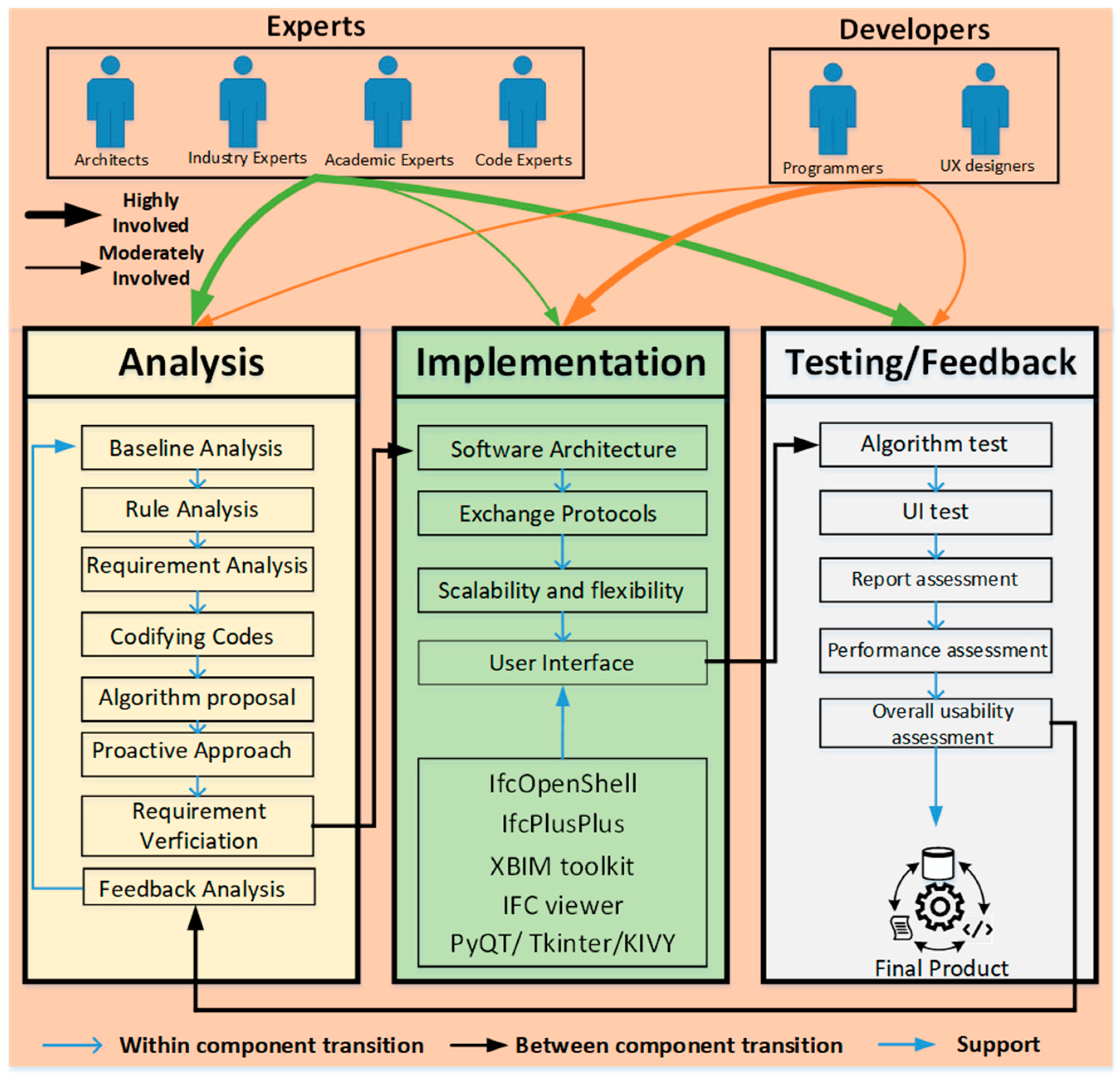
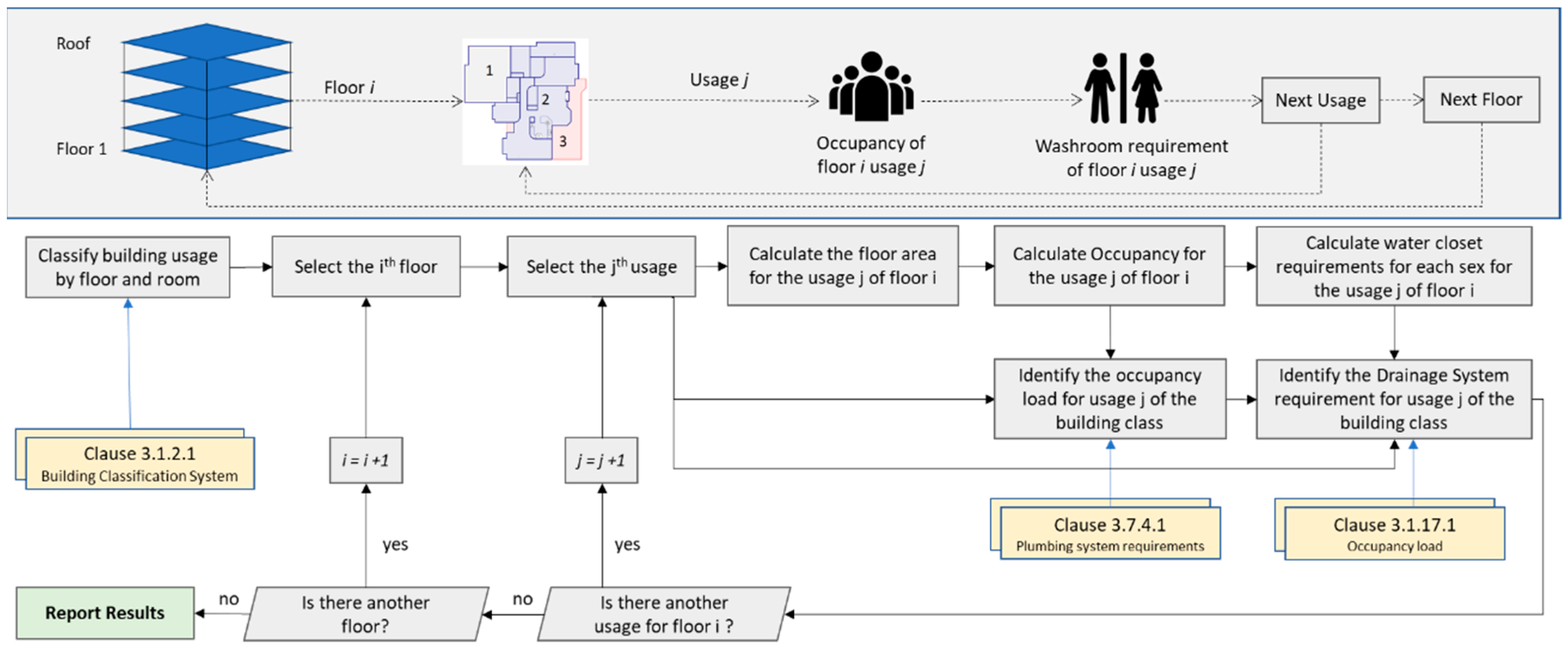
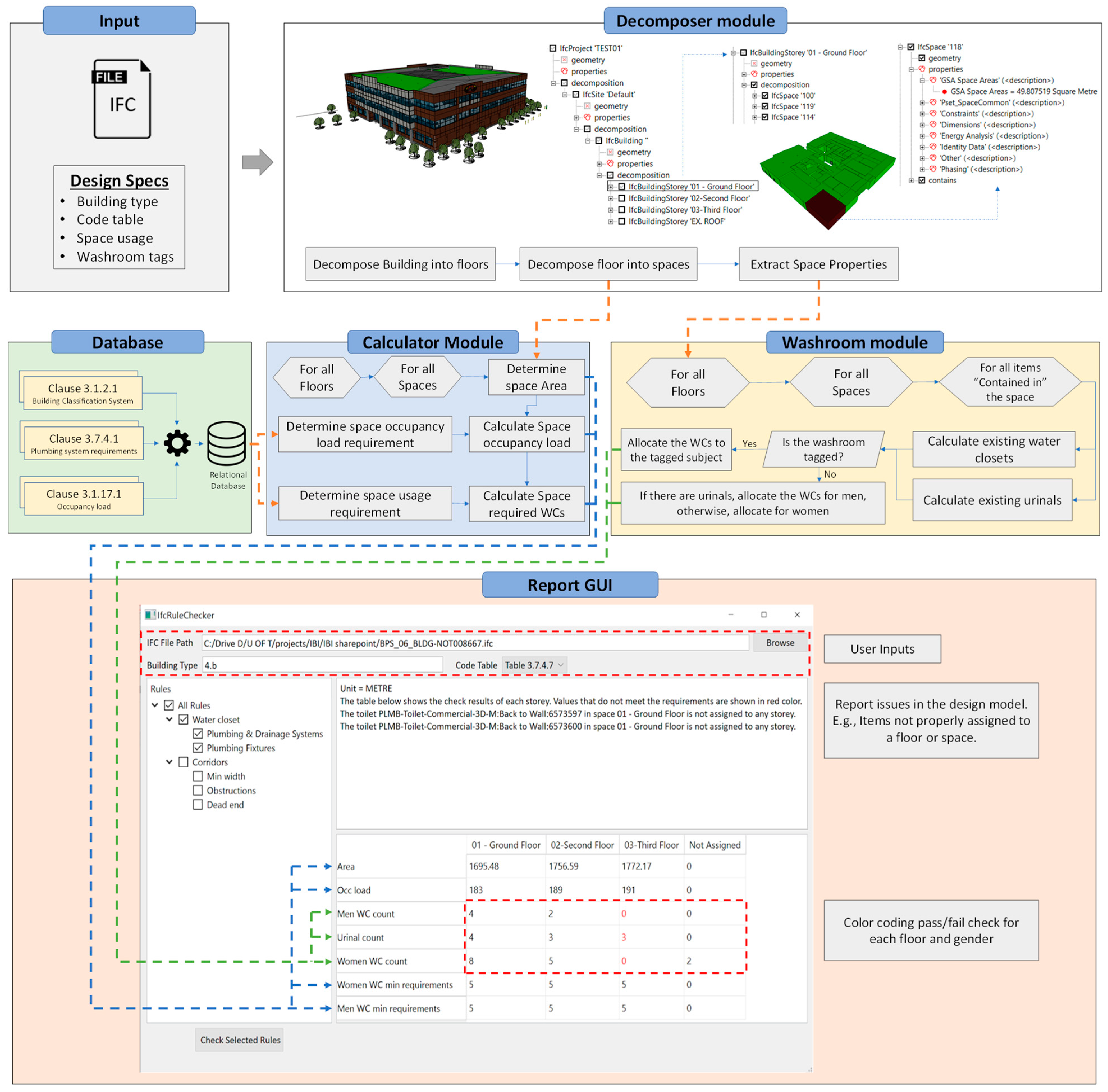
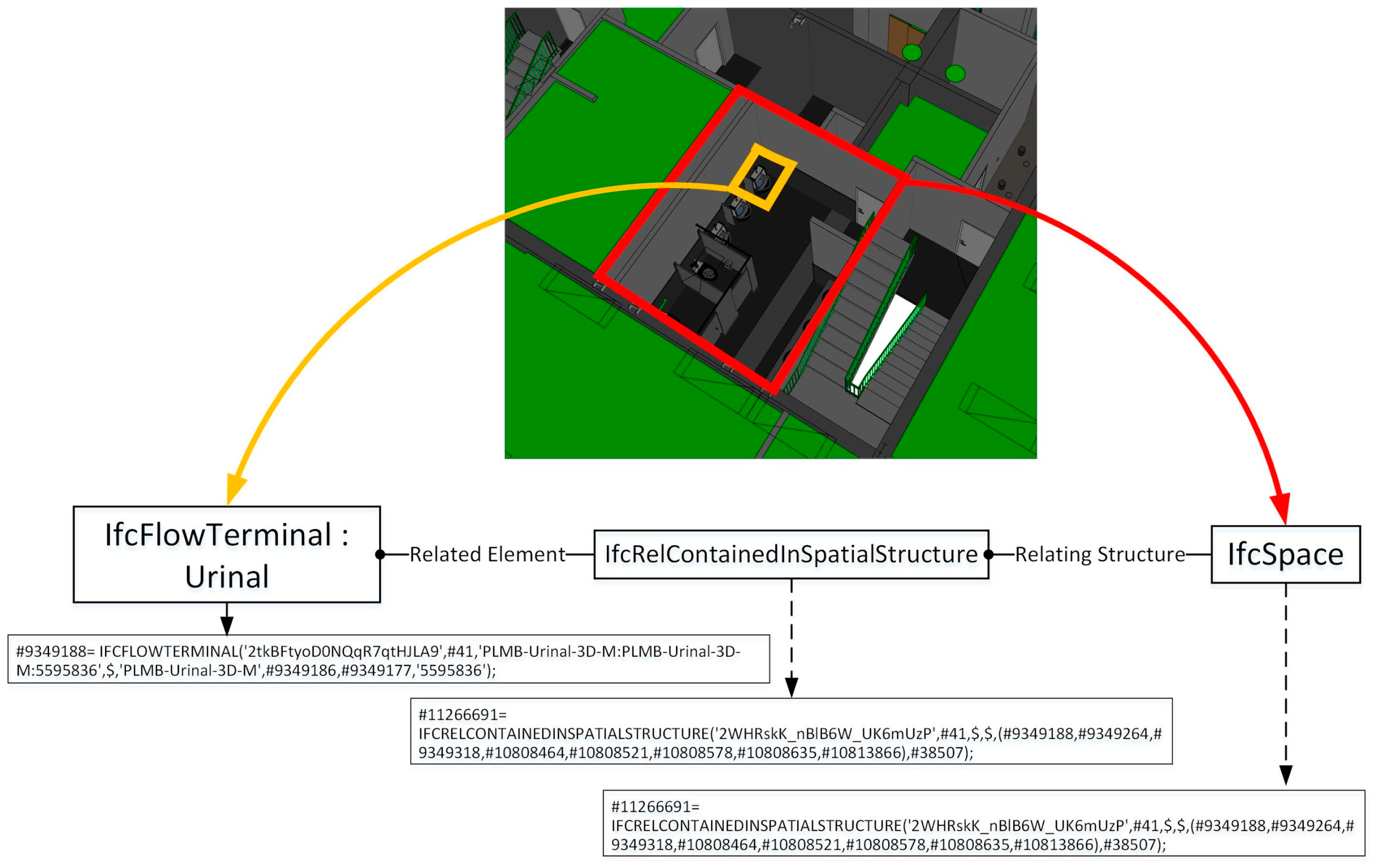
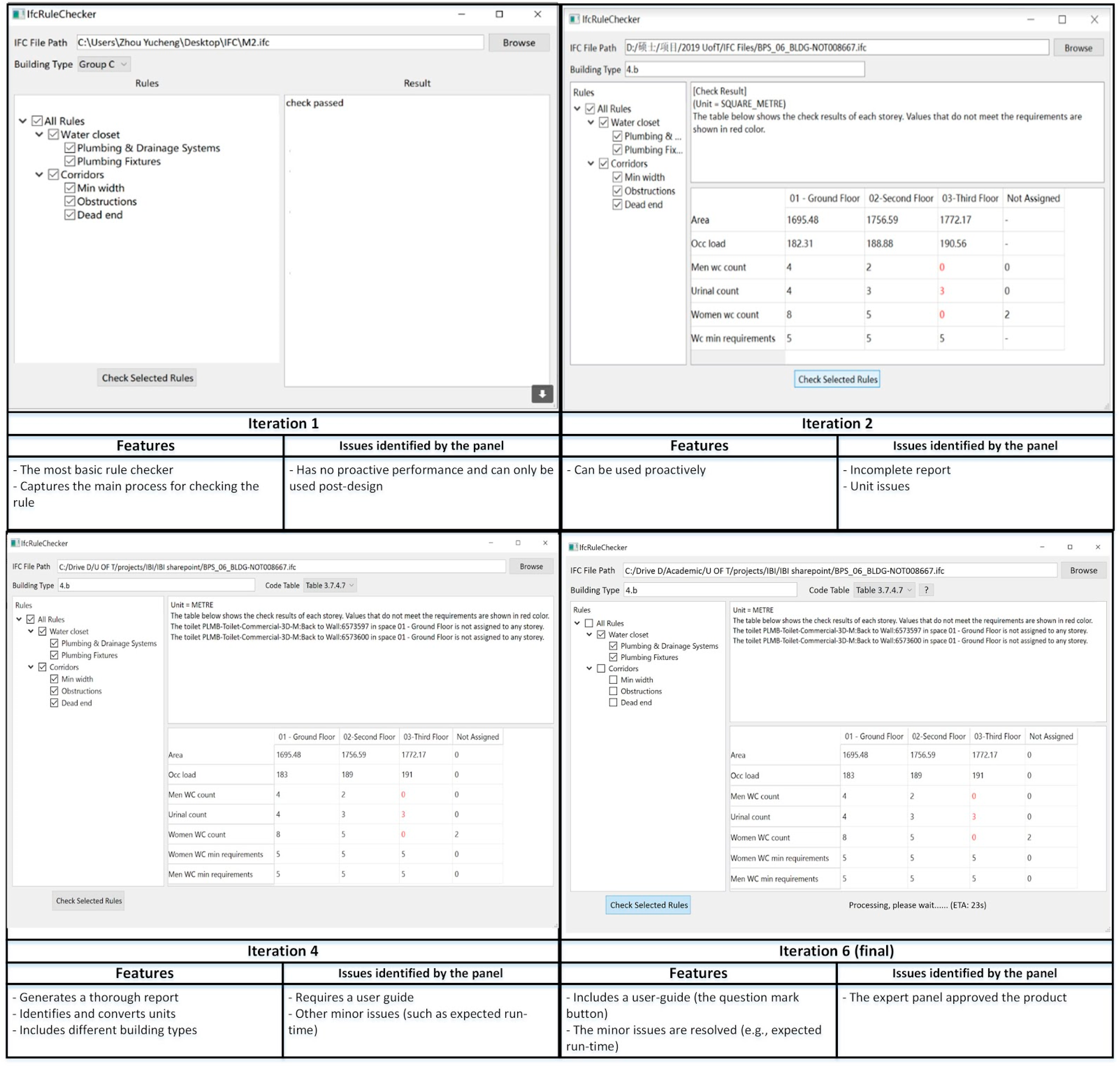
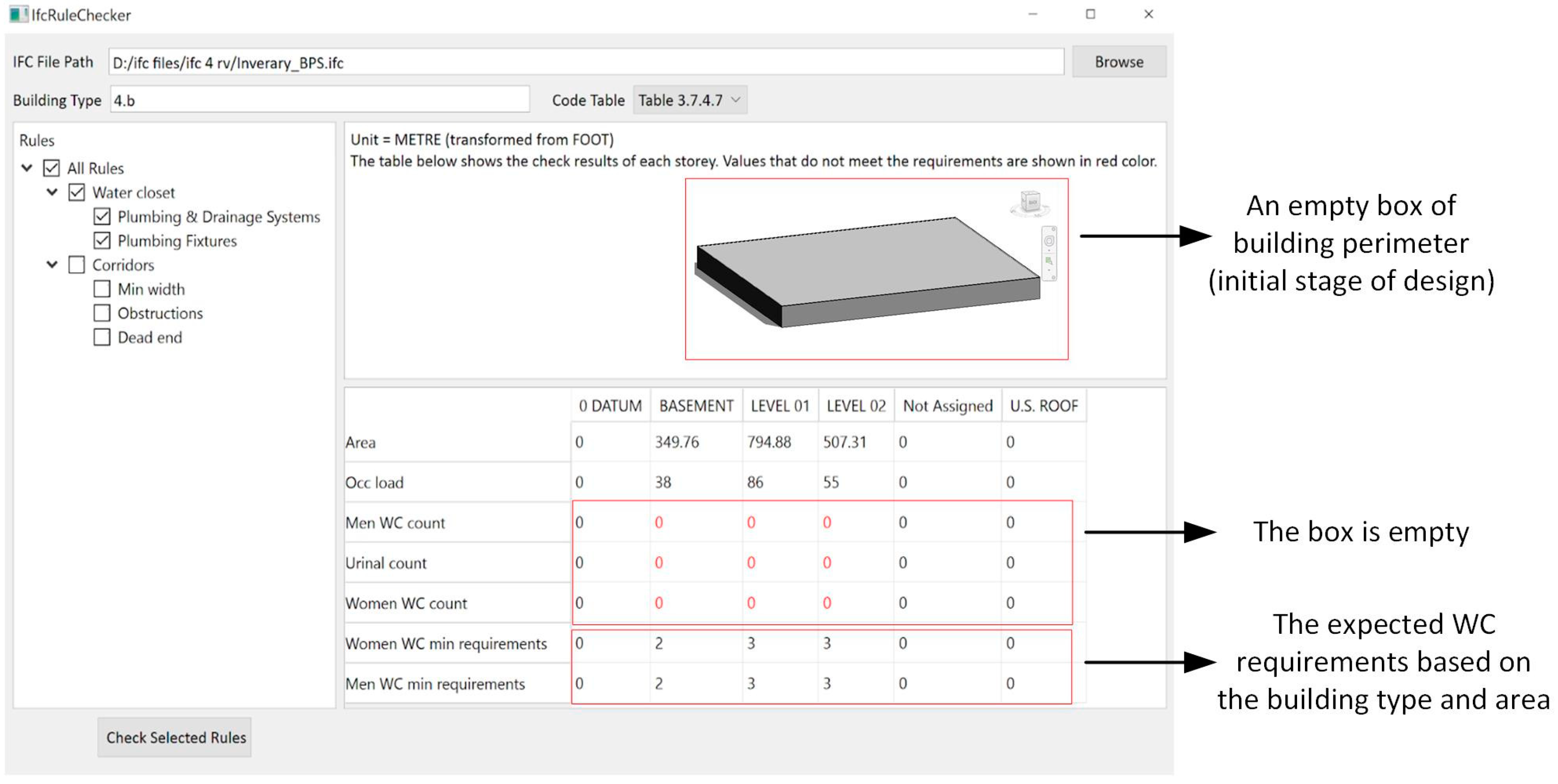
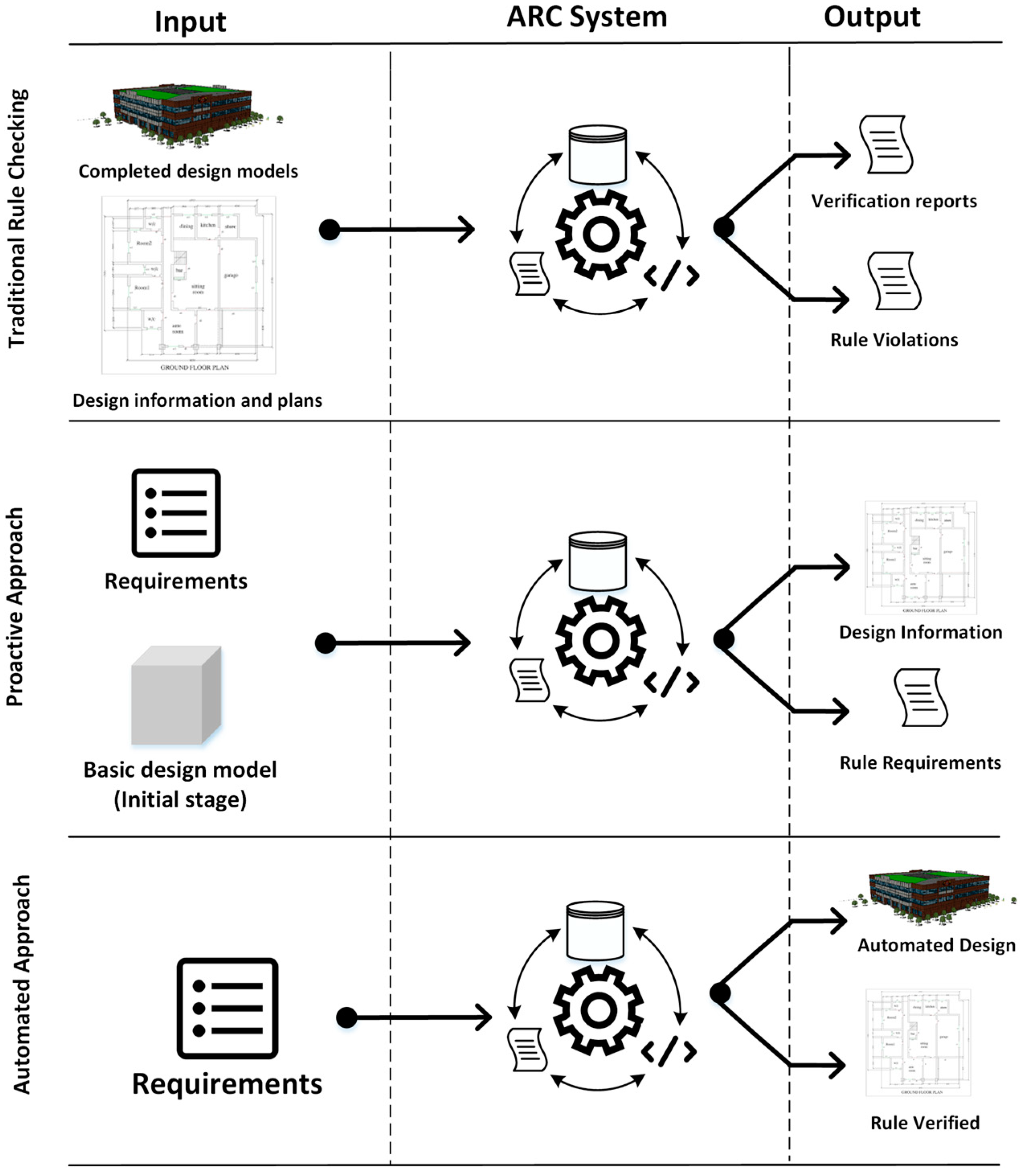
| No. | Requirement | References |
|---|---|---|
| 1 | It should avoid developing black-box solutions. Designers and code experts should be aware of all processes and be dynamically involved in developing them. | [7,8,46,47,48,50] |
| 2 | Hard coding should be minimized to avoid hard to maintain systems. | [31,48,49] |
| 3 | Information exchange should be managed at three levels of information modeling, model exchange, and information query systems. The role of each participant in providing and retrieving information in each phase must be clear. | [5,21,22,32,33,45] |
| 4 | The final system should enable proactive design. | [20,48] |
Publisher’s Note: MDPI stays neutral with regard to jurisdictional claims in published maps and institutional affiliations. |
© 2021 by the authors. Licensee MDPI, Basel, Switzerland. This article is an open access article distributed under the terms and conditions of the Creative Commons Attribution (CC BY) license (https://creativecommons.org/licenses/by/4.0/).
Share and Cite
Sobhkhiz, S.; Zhou, Y.-C.; Lin, J.-R.; El-Diraby, T.E. Framing and Evaluating the Best Practices of IFC-Based Automated Rule Checking: A Case Study. Buildings 2021, 11, 456. https://doi.org/10.3390/buildings11100456
Sobhkhiz S, Zhou Y-C, Lin J-R, El-Diraby TE. Framing and Evaluating the Best Practices of IFC-Based Automated Rule Checking: A Case Study. Buildings. 2021; 11(10):456. https://doi.org/10.3390/buildings11100456
Chicago/Turabian StyleSobhkhiz, Soroush, Yu-Cheng Zhou, Jia-Rui Lin, and Tamer E. El-Diraby. 2021. "Framing and Evaluating the Best Practices of IFC-Based Automated Rule Checking: A Case Study" Buildings 11, no. 10: 456. https://doi.org/10.3390/buildings11100456
APA StyleSobhkhiz, S., Zhou, Y.-C., Lin, J.-R., & El-Diraby, T. E. (2021). Framing and Evaluating the Best Practices of IFC-Based Automated Rule Checking: A Case Study. Buildings, 11(10), 456. https://doi.org/10.3390/buildings11100456







